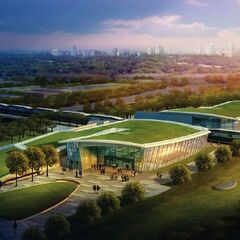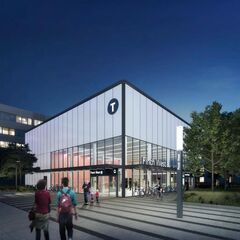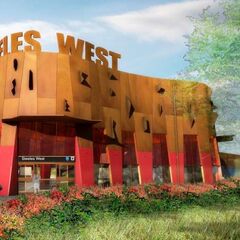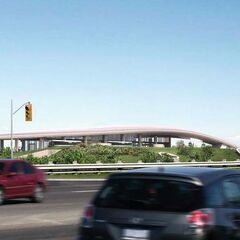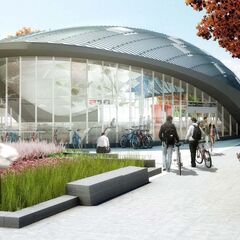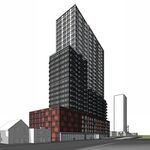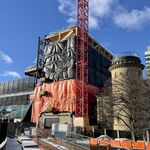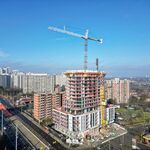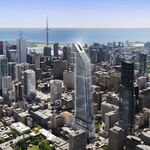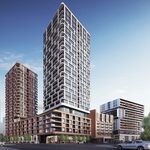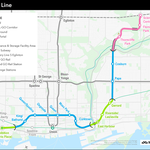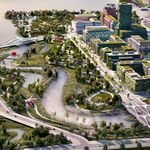Crowds rivalling those seen during a typical Toronto morning rush filled the northwestern leg of the Line 1 subway yesterday, as the public scrambled—free of charge—for a first glimpse at the six new subway stations that opened as part of the Toronto-York Spadina Subway Extension (TYSSE) project. To celebrate the $3.2 billion extension—and the first subway service beyond Toronto's city limits—UrbanToronto hosted a meet-up yesterday afternoon, giving staff and our Forum contributors the chance to mingle and experience the new stations.
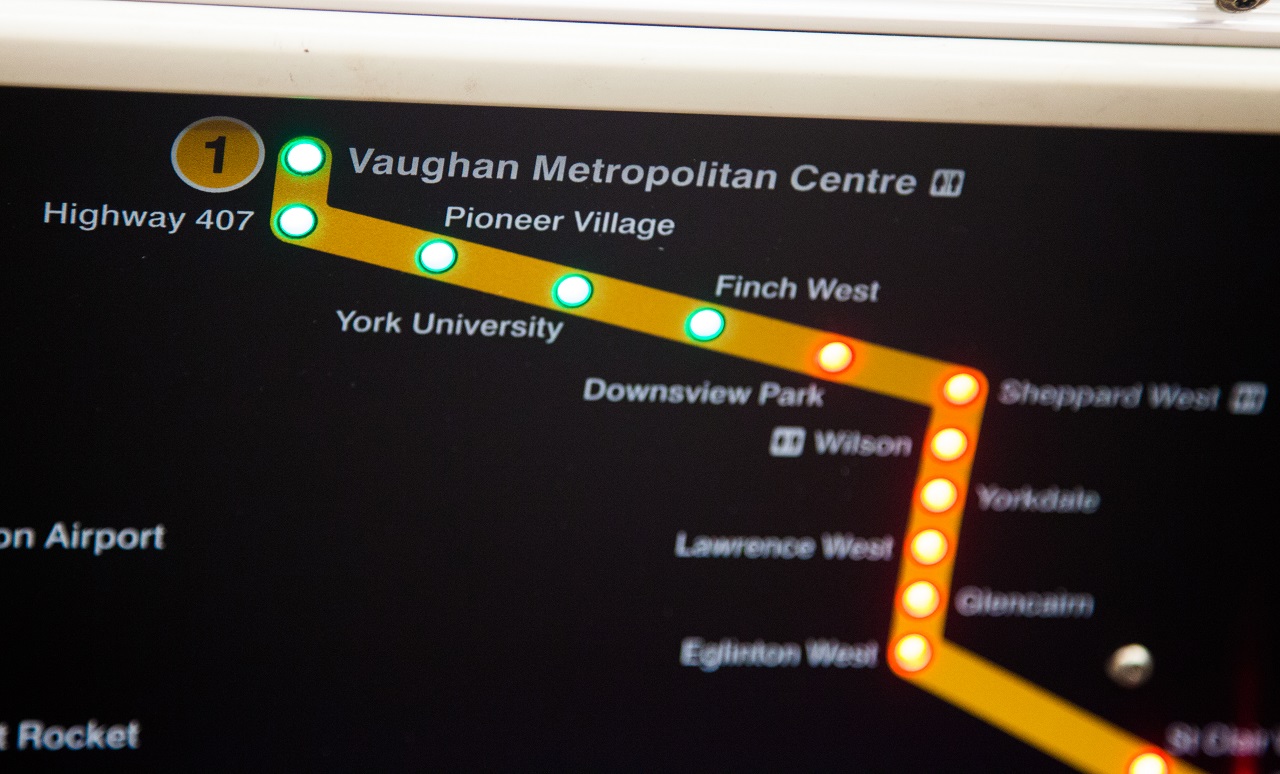 Crossing onto the extension after leaving Sheppard West Station, image by Jack Landau
Crossing onto the extension after leaving Sheppard West Station, image by Jack Landau
The first stop on our tour of the 8.6-kilometre extension was Downsview Park Station, an AECOM and Parsons Brinckerhoff-designed station one stop beyond the former terminus at Sheppard West. Named for the park it resides at the north edge of, Downsview Park Station is an intermodal stop, with two station buildings straddling a connecting stop on the GO Transit Barrie line. (GO service to the station begins on December 30, 2017.)
 Downsview Park Station, image by Jack Landau
Downsview Park Station, image by Jack Landau
With a muted colour palette, the station's grand spaces feel unassuming. Adding some visual kick to the interiors are a collection of swirling forms called Spin by Panya Clark Espinal the same artist who created the similarly trompe l'oeil art at Bayview Station on the Sheppard Line. From most angles, the giant black brushstrokes—which are embedded in the walls, ceilings, and terrazzo floors—look somewhat haphazard, but if you find yourself in one particular spot in the station, they resolve into a vortex. You can view plenty of other photos of Downsview Park Station from yesterday's opening, or share some of yours, in the associated Forum thread.
 Downsview Park Station, image by Jack Landau
Downsview Park Station, image by Jack Landau
The next stop on the extension is Finch West. Designed by Will Alsop's aLL Design working with IBI Group, this colourful station at the intersection of Keele and Finch was plagued by construction delays, and the last few months of work prior to the opening was a race to the finish. While there are still finishing touches left to be completed here before the exterior matches up to the pre-construction renderings, the station's colourful flashes and barcode-inspired facades proved quite popular with people yesterday.
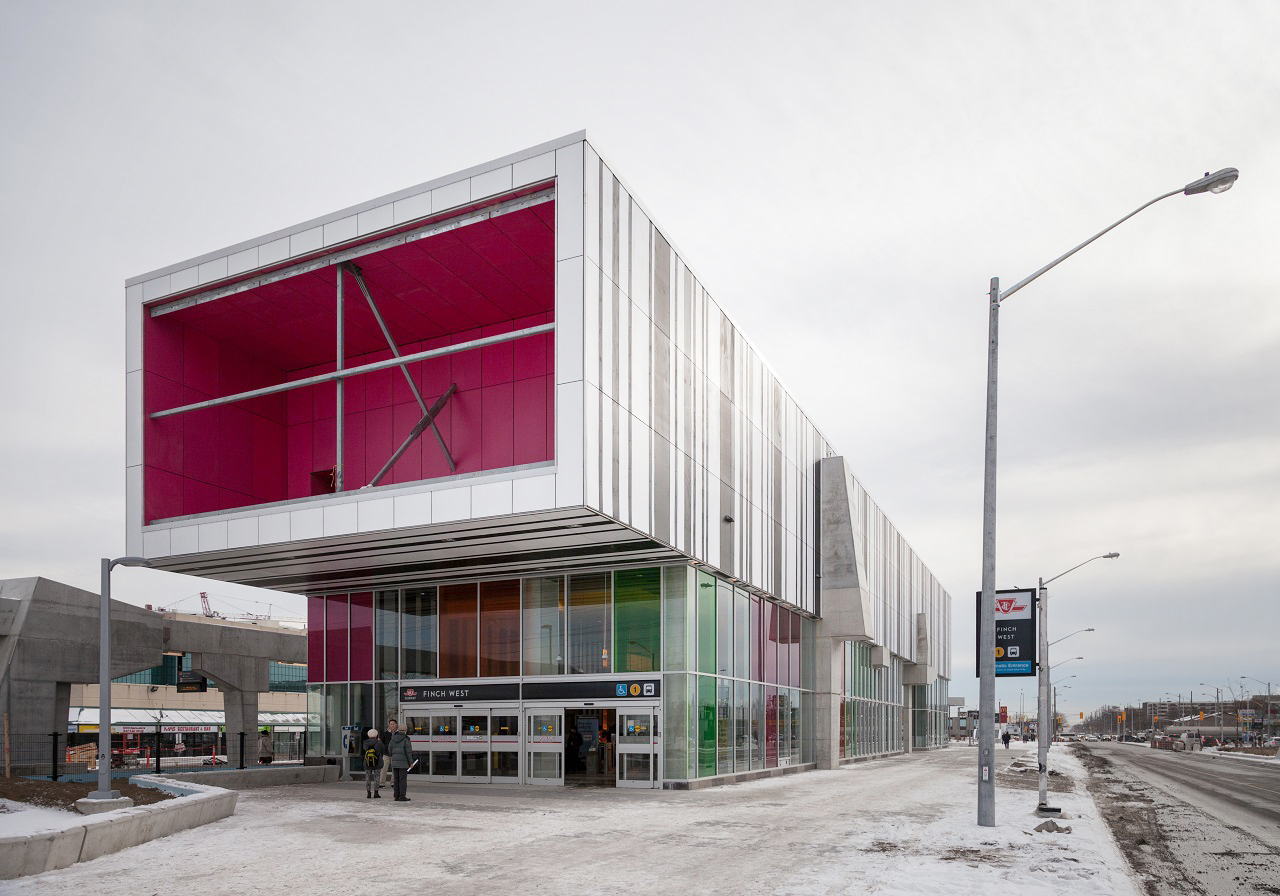 Finch West Station, image by Jack Landau
Finch West Station, image by Jack Landau
Down at track level, hefty freeform supporting columns echo the exposed concrete elements seen on the station's exteriors. Two-toned mustard coloured tiles add a vibrant shot of colour to the mix. There is a lot more to see at Finch West Station, and you can view even more photos of its various components in our dedicated Forum thread for the project, as well as share photos of your own.
 Finch West Station, image by Jack Landau
Finch West Station, image by Jack Landau
Moving one stop north, York University gains a new rapid transit connection in he centre of the quad. The station's swooping exterior, desgned by Foster + Partners and Arup Canada, forms two wings, wrapping around a sunken landscaped courtyard that doubles as a light well to naturally illuminate the station concourse below.
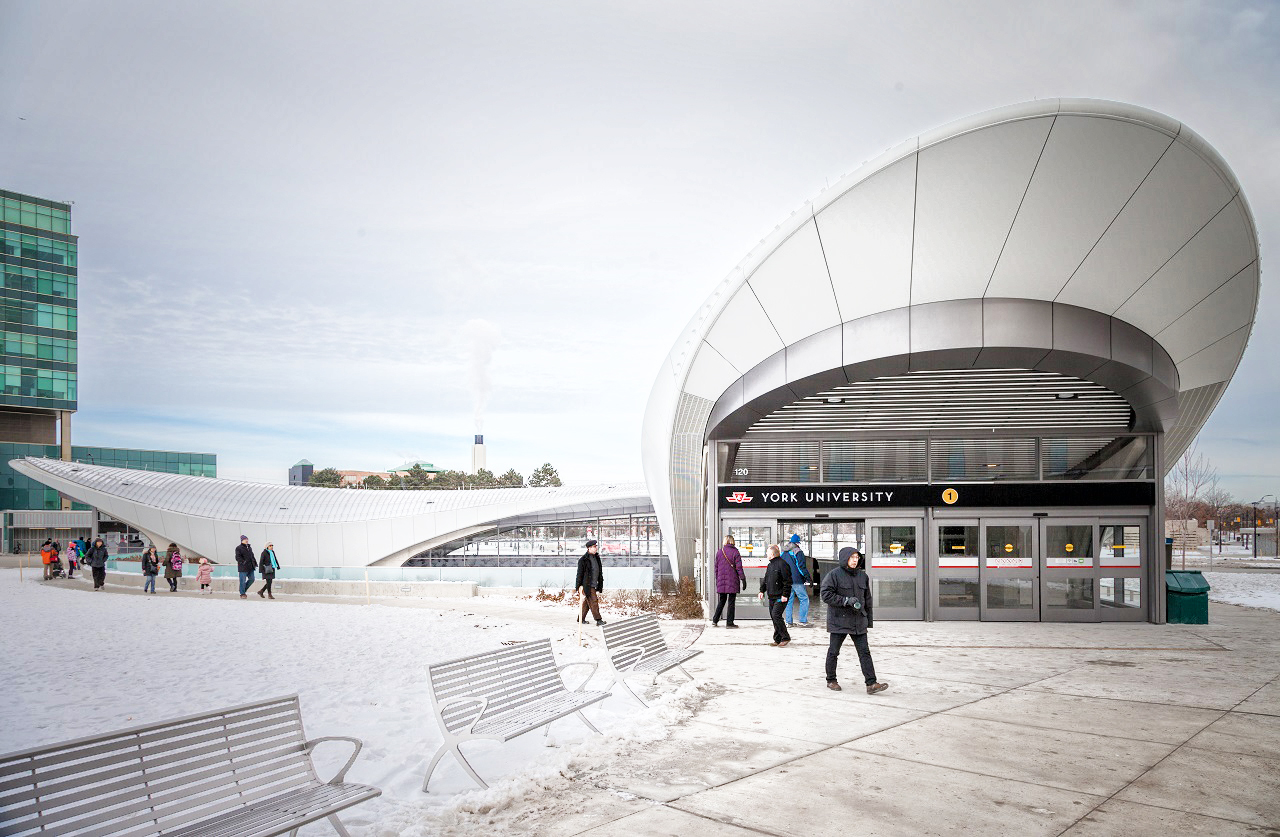 York University Station, image by Jack Landau
York University Station, image by Jack Landau
The station interior is marked by a series of exposed concrete structural elements that form a honeycomb-like lattice. A muted palette of greys drives home the futuristic look. You can find additional photos of York University Station from yesterday's opening—or share your own—in our Forum thread for the project.
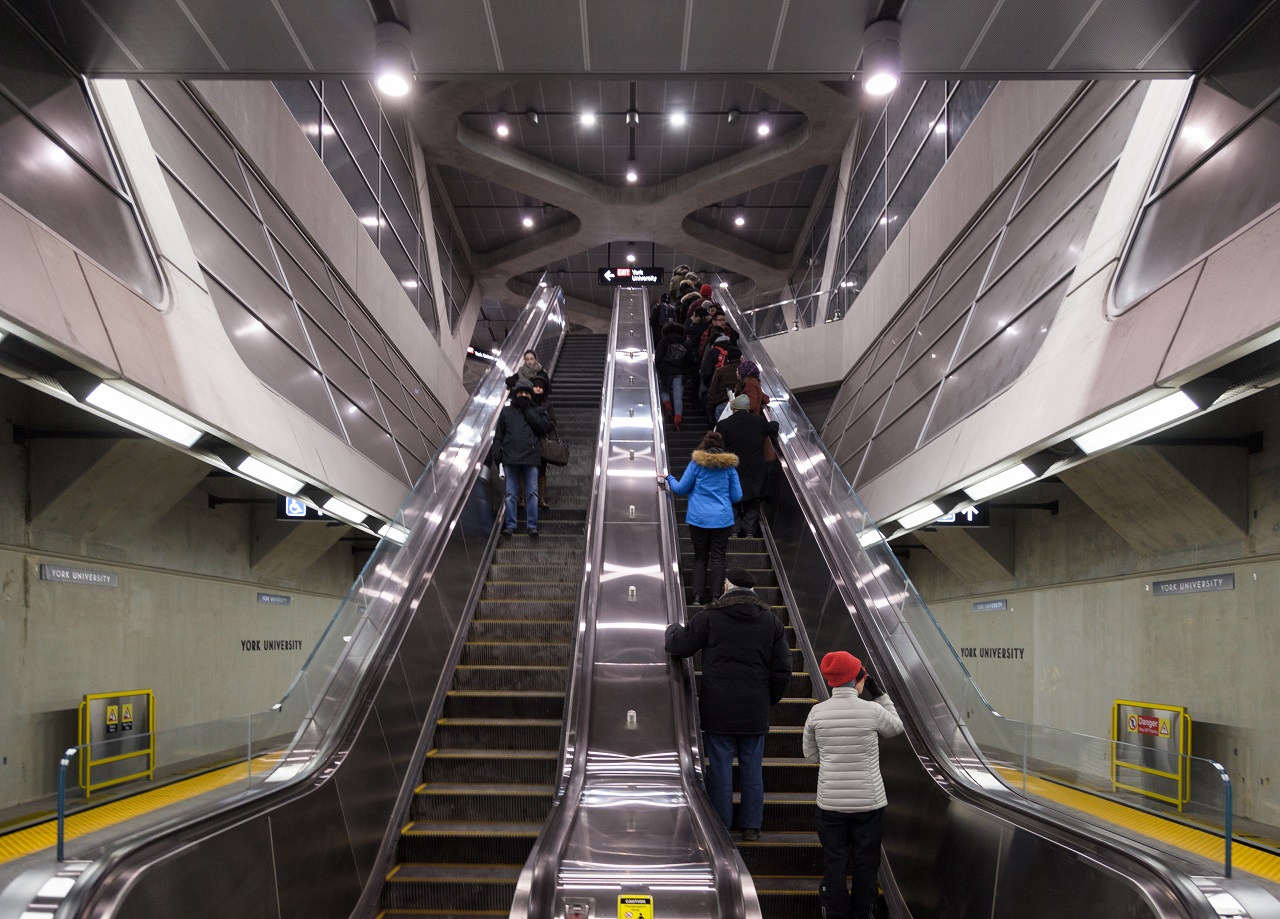 York University Station, image by Jack Landau
York University Station, image by Jack Landau
Continuing to the next stop to the north, Pioneer Village is the second by Will Alsop's aLL Design and IBI Group. Like Finch West, Pioneer Village is one of the extension's most colourful stops, with an exterior of pre-rusted Corten steel and vibrant red enamelled steel. The station—located on Steeles West between Jane and Keele—straddles the boundary between Toronto and York Region, with station buildings on each side of the line.
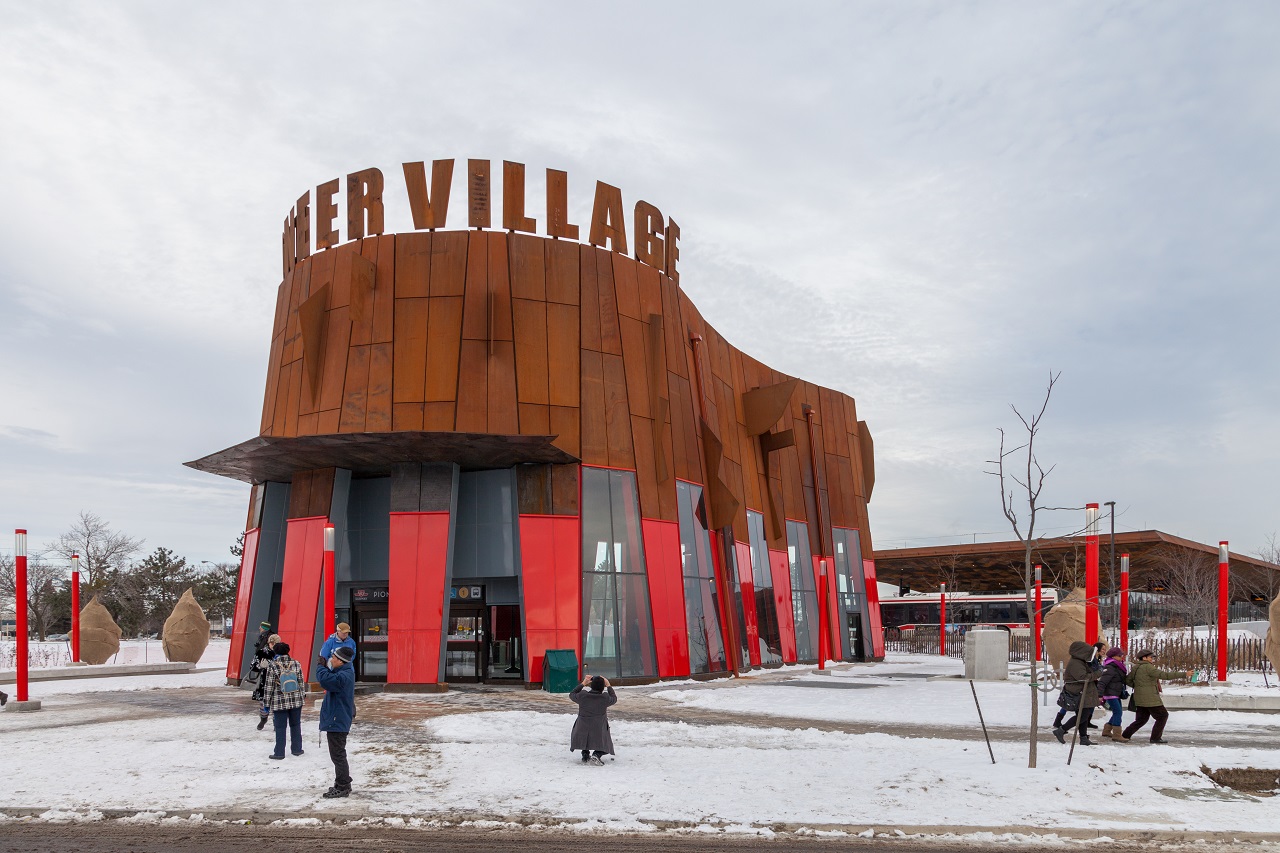 Pioneer Village Station, image by Jack Landau
Pioneer Village Station, image by Jack Landau
Corten steel is also abundant inside. Below, a view from platform level shows the rusted steel finishes are joined by canted supporting columns with polished concrete finishes. Hanging from the roof here is the station's art installation, called Lightspell, an interactive piece by Berln-based artists realties:united, not yet spelling out messages. For more views of the station, its striking TTC bus terminal, and its still under-construction YRT bus terminal, please check out the Pioneer Village Station Forum thread.
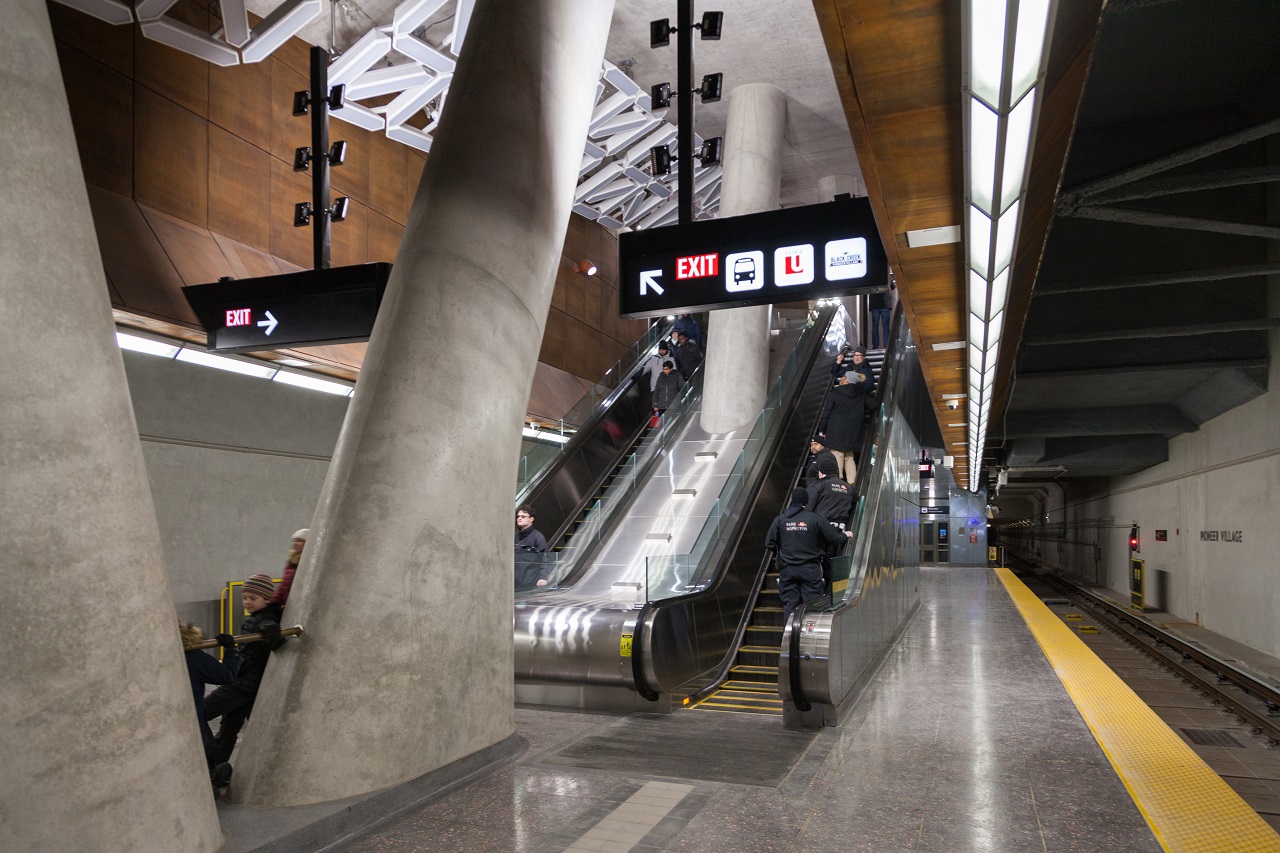 Pioneer Village Station, image by Jack Landau
Pioneer Village Station, image by Jack Landau
Moving to the second last stop on the extension, Highway 407 Station's AECOM and Parsons Brinckerhoff design has been compared to an airport terminal by many, with massive hangar-like spaces, curving wings, and metallic finishes that evoke aerospace design. While the station building is primarily monochromatic, two colourful windows by Toronto-based artist David Pearl help to fill the station's interiors with a spectrum of light.
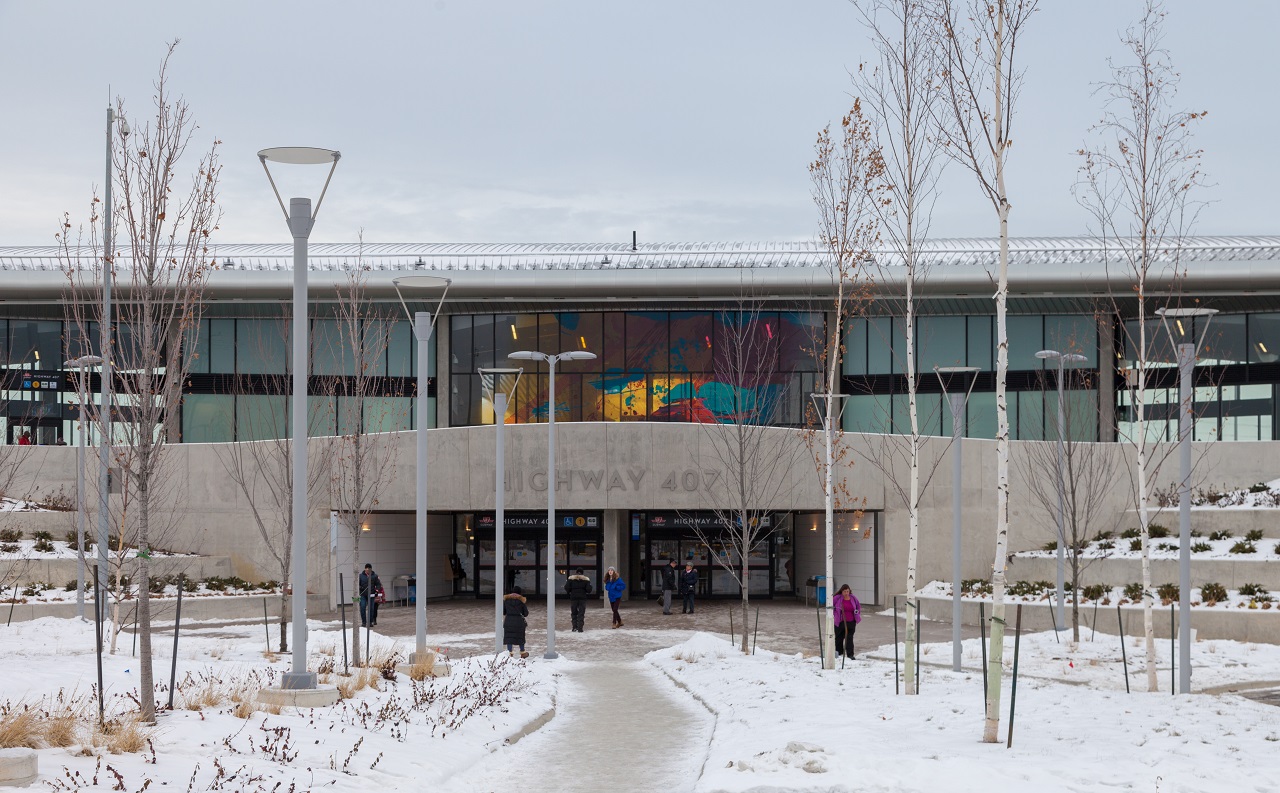 Highway 407 Station, image by Jack Landau
Highway 407 Station, image by Jack Landau
The light from Pearl's multicoloured windows reaches as far down as platform level, filtering through cylindrical apertures that carry escalators to and from the concourse level. There is much more to see at Highway 407 Station, so check out the associated Forum thread to view more photos, or share some of your own!
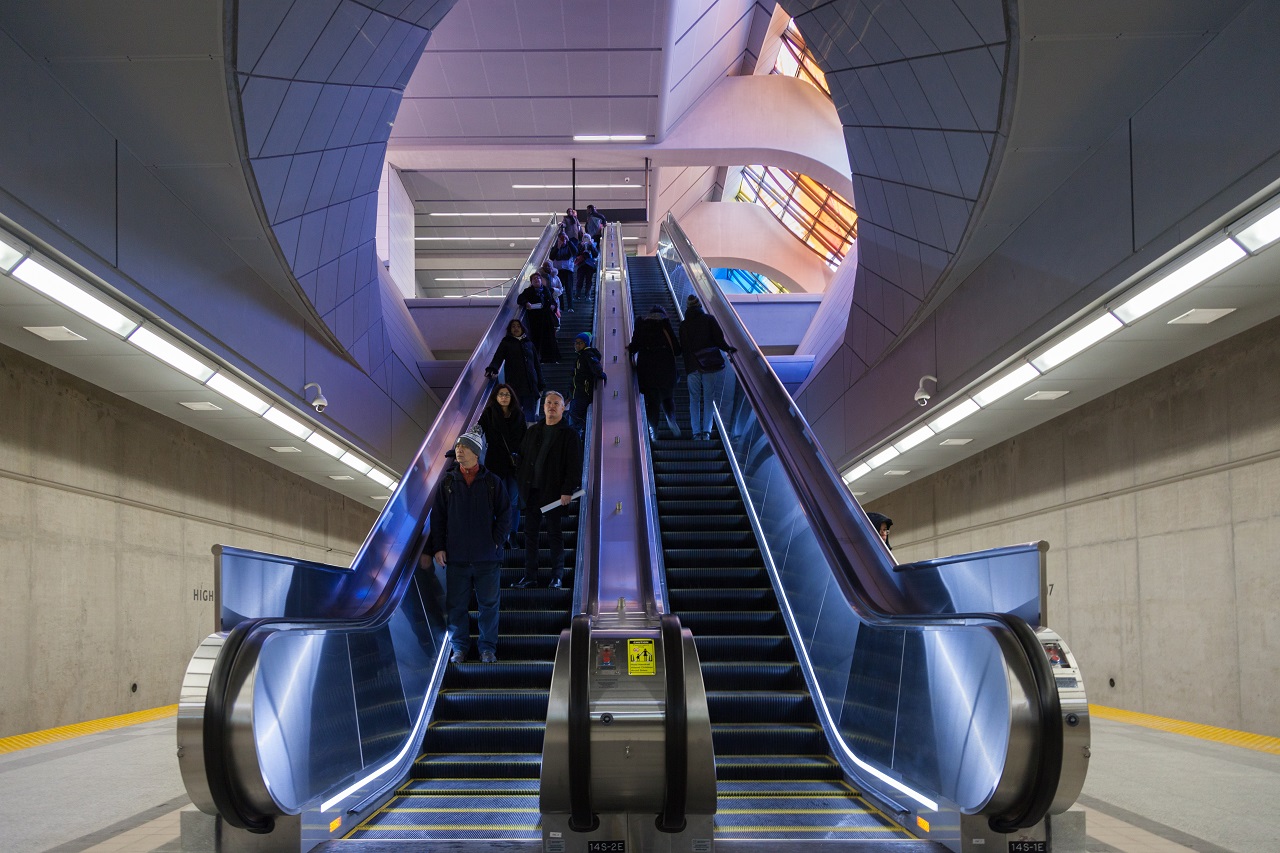 Highway 407 Station, image by Jack Landau
Highway 407 Station, image by Jack Landau
Perhaps the busiest stop yesterday was the new northernmost TTC rapid transit terminus, the Grimshaw Architects and Arup Canada-designed Vaughan Metropolitan Centre Station. Despite being only day one of revenue service, the impact of this new station at the intersection of Jane Street and Highway 7 is already evident. The exterior view below shows a few cranes in action in the surrounding blocks, with a number of developments being built that will soon take advantage of the area's new accessibility.
 Vaughan Metropolitan Centre Station, image by Jack Landau
Vaughan Metropolitan Centre Station, image by Jack Landau
Inside of the station, a mirrored dome ceiling by Paul Raff Studio was a popular target for photographs, as well as the station's airy concourse level and platform levels below. Several more photos captured yesterday can be viewed in the project's Forum thread.
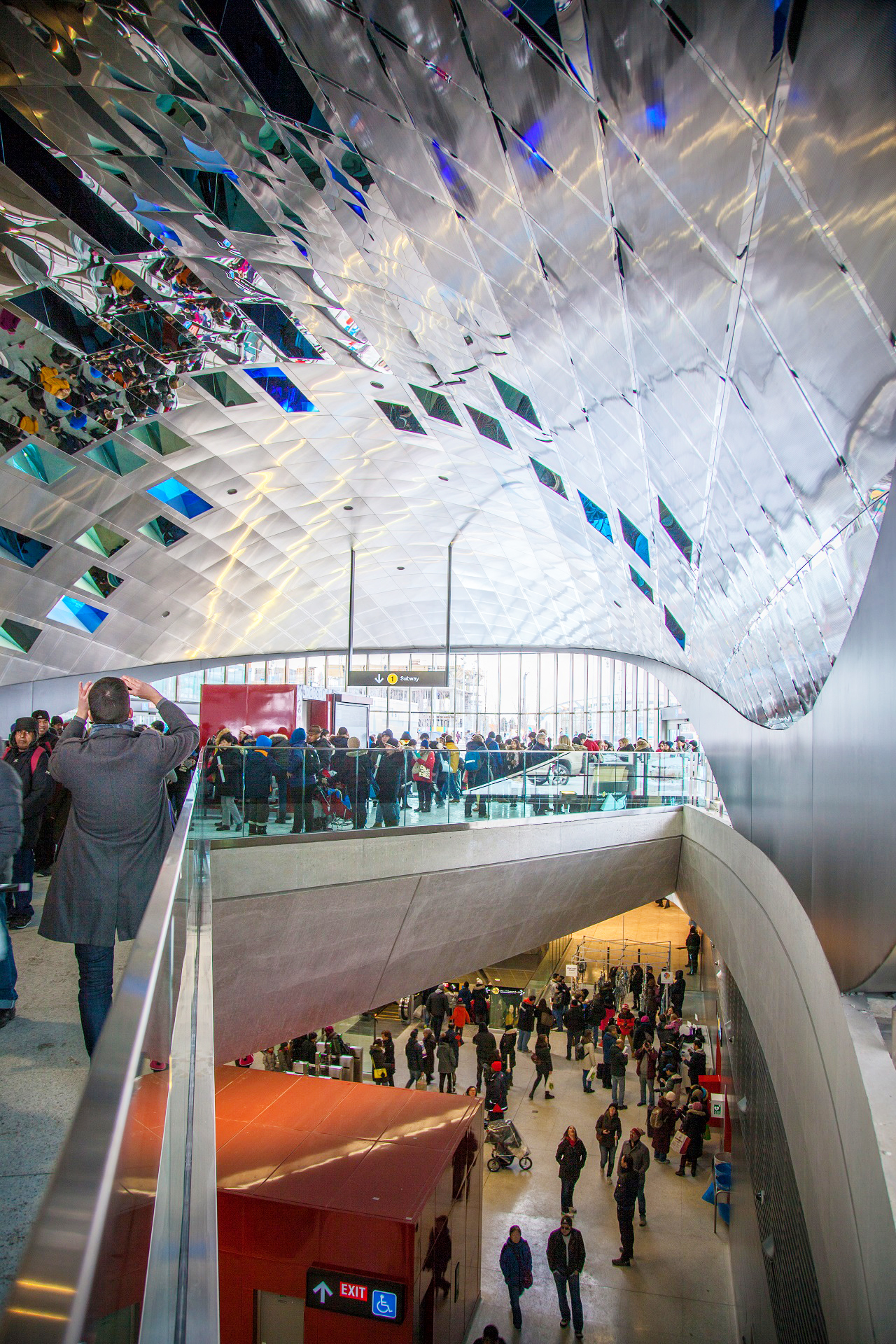 Vaughan Metropolitan Centre Station, image by Jack Landau
Vaughan Metropolitan Centre Station, image by Jack Landau
You can learn even more about the stations below by clicking on the project database file lnks. Want to get involved in the discussion? Visit the associated Forum threads linked throughout the article, or leave a comment in the field provided at the bottom of this page.
| Related Companies: | Arcadis, entro, Janet Rosenberg & Studio, LEA Consulting, LiveRoof Ontario Inc, Precise ParkLink |

 3.2K
3.2K 



